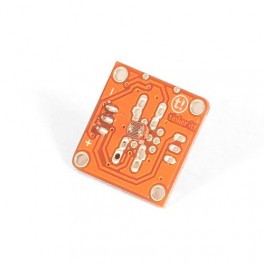 Padidinti
Padidinti TinkerKit LDR jutiklis
TinkerKit LDR jutiklis
Kategorijos
 Padidinti
Padidinti TinkerKit LDR jutiklis
TinkerKit LDR (Light Dependant Resistor) jutiklis.
Aprašymas:
Šis modulis yra 12mm mygtukas, standartinė TinkerKit 3 kištukų jungtis. Žalios šviesos LED signalas įsijungia, kai modulis yra tinkamai maitinamas ir geltonas šviesos LED užsidega, kai jutiklis pajungiamas.
Kodo pavyzdys:
/*
Analog input, analog output, serial output
Reads an analog input pin, and T000090 LDR Analog Sensor connected to I0, maps the result to a range from 0 to 255
and uses the result to set the pulsewidth modulation (PWM) on a T010111 LED Module connected on O0.
Also prints the results to the serial monitor.
created 29 Dec. 2008
Modified 4 Sep 2010
by Tom Igoe
modified 7 dec 2010
by Davide Gomba
This example code is in the public domain.
*/
#define O0 11
#define O1 10
#define O2 9
#define O3 6
#define O4 5
#define O5 3
#define I0 A0
#define I1 A1
#define I2 A2
#define I3 A3
#define I4 A4
#define I5 A5
// These constants won't change. They're used to give names
// to the pins used:
const int analogInPin = I0; // Analog input pin that the LDR is attached to
const int analogOutPin= O0; // Analog output pin that the LED is attached to
int sensorValue = 0; // value read from the pot
int outputValue = 0; // value output to the PWM (analog out)
void setup() {
// initialize serial communications at 9600 bps:
Serial.begin(9600);
}
void loop() {
// read the analog in value:
sensorValue = analogRead(analogInPin);
// map it to the range of the analog out:
outputValue = map(sensorValue, 0, 1023, 0, 255);
// change the analog out value:
analogWrite(analogOutPin, outputValue);
// print the results to the serial monitor:
Serial.print("sensor = " );
Serial.print(sensorValue);
Serial.print("t output = ");
Serial.println(outputValue);
// wait 10 milliseconds before the next loop
// for the analog-to-digital converter to settle
// after the last reading:
delay(10);
}